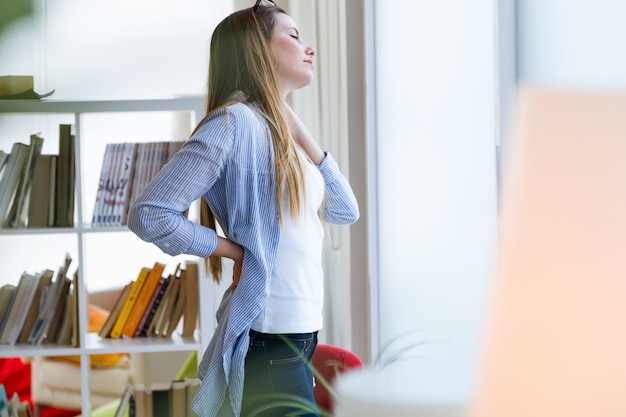
Back pain is a common issue that many people face, with over 80 percent experiencing lower back pain at least once in their lives. It’s one of the main reasons people miss work. While back pain can occur at any age, it’s most frequent in adults aged 35 to 55. Experts say back pain often relates to how our muscles, ligaments, and bones in the back work together. It can be linked to the lumbar spine, spinal cord, discs, lower back muscles, nerves, pelvic organs, and the skin around the lumbar area and abdomen. Upper back pain, however, usually stems from aortic disorders, chest tumors, or spine inflammation. Let’s look at the main causes of back pain and the treatment options available:
**Causes of Back Pain**
1. Strains: These happen from ripping or tearing the lumbar spine. Heavy lifting or sudden force can tear muscles and blood vessels, causing pain. It usually takes a few hours for the bleeding to stop, and then pain starts in the injured area, often with swelling and muscle spasms.
2. Sprains: These occur when ligaments are overstretched or torn, often resulting in back pain. Both strains and sprains can also result from car accidents.
**Other Causes**
1. **Disc Injury**: When a disc between vertebrae bulges out of its place, it can cause severe pain.
2. **Spinal Stenosis**: This is the narrowing of the spinal canal.
3. **Osteoarthritis of the Spine**: This causes severe pain due to vertebrae damage.
4. **Spondylolisthesis**: Acute pain from a vertebra slipping forward over the one beneath it.
5. **Spondylitis**: Joint immobility and stiffness ranging from the lower back to the shoulder cause pain.
6. **Pregnancy**: Hormonal changes and lumbar curvature stress the lower back muscles, leading to back pain in expectant mothers.
**Treatment Options for Back Pain**
In many cases, back pain can be managed without seeing a doctor. With careful attention and home remedies, you can often relieve the pain. If the pain is severe and home treatments don’t help, you should see a doctor for a diagnosis and proper treatment. Here are common home treatments:
**Heat and Cold Therapy**
Applying an ice pack or cold object to the painful area can reduce pain. If the pain persists after 48 hours, try a heating pad or a hot shower for relief.
**Physical Therapy**
Exercises, both short-term and long-term, can alleviate lower back pain. A physiotherapist can recommend an exercise program tailored to relieve your pain. Treatments by physiologists may include Electrical Nerve Stimulation, Hydrotherapy, and Massage Techniques.
**Traction**
This involves stretching the spinal cord using special equipment and should be done under expert supervision. Consult an expert if you’re unfamiliar with this method.
**Medication**
If other methods don’t work, consult an orthopedic expert. The doctor will diagnose the cause of the pain, possibly using X-rays, MRI/CT scans, or bone scans before prescribing medication to relieve your pain.
**Surgery**
Surgery is a last resort and is rare for treating back pain. Conditions like herniated disks causing persistent pain and nerve compression might need surgery such as vertebrae fusion, artificial disk removal, partial disk removal (discectomy), or partial vertebra removal.
Understanding and treating the causes of back pain can help you lead a pain-free life.